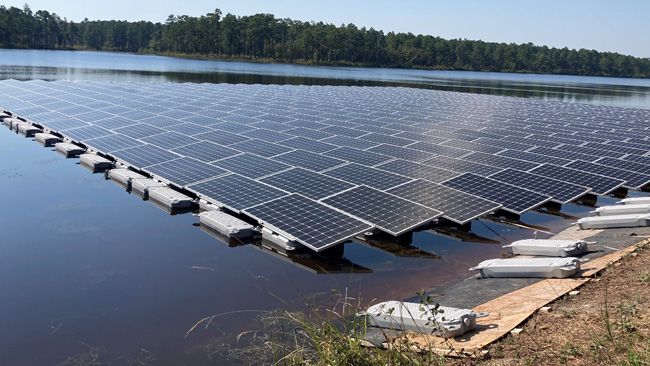When most of us think about the purpose of the military, the first thing that comes to mind is the defense of the American public at home and protecting our interests abroad. Sustainability is an answer much further down the list for most, usually around NFL game fighter jet flyovers and assistance with the production of “Top Gun.”
Despite what many may think, the Department of Defense has made significant strides as a government leader in protecting the planet’s health and ensuring a low-carbon future. Given its presence as one of the largest employers worldwide, any steps to limit its environmental footprint can make a massive difference.
This stewardship can be seen on the American homefront, as military stations like North Carolina’s Ft. Bragg work overtime to cultivate a positive relationship with the surrounding wildlife. All this while simultaneously making efforts to get the base’s operations to reach the department’s goal of having net-zero carbon emissions by 2050.
Outside the base’s walls, Bragg personnel comb through the nearby woods to document any at-risk or endangered species and any visible threats that might hamper their future survival.Inside the fort, officials have begun to form partnerships with area renewable companies in anticipation of long-term sustainable power needs. One of these collaborations culminated in the recently finished construction of a cutting-edge solar energy array that floats entirely on water.
With the help of regional provider Duke Energy, Ft. Bragg announced in June the completion of a 1.1-megawatt solar facility on base grounds. It is considered a “floatovoltaic” solar array, a nod to the fact that it sits atop the surface of the nearby Big Muddy Lake.
The $36 million project will provide a much-needed boost to the self-sustainability of the base, which will include a 2-megawatt emergency battery. In addition to helping limit the emissions caused by everyday base-wide functions, the facility will be a crucial investment for achieving the Army’s recent mandate of being 100% sustainable in all operations by 2040.
The new power source is one of a select few floating arrays operating at American military bases. Though floating solar is a relative newcomer on the renewables scene — floatovoltaics make up only 2% of all solar production in the country — it provides a host of advantages that most traditional array setups cannot.
One significant benefit is reducing the routine cooling needs of everyday panel maintenance. The obvious need for uninterrupted sunlight means most solar arrays are built in areas of limited shade. While these spaces provide better access to the sun’s radiation and a consistent energy flow, panels can overheat and damage machinery over extended periods. Putting them on the water allows the panels to be cooled naturally, saving time and money for Ft. Bragg personnel.
Floating arrays are also crucial in solving the scarcity problem for traditional solar operations. Land availability is the biggest limiting factor of plans involving solar supplanting most of the world’s energy needs.
The land space for a solar plant to produce 1 gigawatt of electricity is 20 times greater than the space needed for a fossil fuel plant of the same output, making finding available surface area arguably the most critical energy question of the near future. Floatovoltaics can be a possible solution to this problem. An analysis by Nature found that the world’s energy needs could be filled by covering just 10% of existing hydropower water reservoirs with solar arrays.





